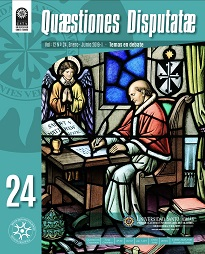Salles naturelles de lecture “une stratégie pour renforcer la compétence en lecture“
##plugins.themes.bootstrap3.article.main##
Résumé
L’article suivant, issu de la réflexion de la recherche “Salles naturelles de lecture - Une stratégie pour renforcer l’alphabétisation en lecture”, inscrit au master en éducation, modalité: approfondissement de l’Université Pédagogique et Technologique de Colombie. L’objectif général a été celui de renforcer les compétences en lecture grâce à la mise en place de salles naturelles de lecture avec les élèves de cours moyen 2 de L’établissement D’enseignement Technique Tomás Vásquez Rodríguez de Paipa (Colombie) au siège de Sativa et la Bolsa. Cette recherche s’est inscrit dans une approche qualitative car elle cherche à décrire la création de salles naturelles de lecture, conçues comme un nouvel espace attractif où la nature est la classe et l’entourage d’apprentissage est créé à partir de la lecture. Dans le cadre de la Recherche Action , on a implanté des ateliers qui s’intègrent à l’éducation environnementale, afin de développer une pensée éco-critique. Initialement, on a identifié les causes des faibles taux de lecture et d’écriture chez les élèves pour ensuite concevoir et de mettre en oeuvre des salles naturelles de lecture. En conclusion, les salles naturelles de lecture représentent une stratégie qui permet de renforcer la compétence communicative de lecture celle-ci, favorise l’habitude de lire et envisage les élèves en tant que futurs lecteurs, intéressés par celle-ci, en profitant d’un environnement naturel et libre. Tout ceci pour éveiller l’amour par lecture chez les apprenants pour qu´ils profitent de la pleine capacité d’apprentissage.
##plugins.themes.bootstrap3.article.details##
Comment citer
Pineda de-Cuadros, N. E., Puerto-Reyes, S. E., & Torres-Angarita, R. M. (2019). Salles naturelles de lecture “une stratégie pour renforcer la compétence en lecture“. Quaestiones Disputatae: Temas En Debate, 12(24), 161-182. Consulté à l’adresse http://revistas.ustatunja.edu.co/index.php/qdisputatae/article/view/1818
Rubrique
Artículos Vol. 12
De acuerdo a la Licencia Creative Commons Atribución-No Comercial-Sin Derivar 4.0 Internacional, se autoriza leer, descargar, copiar, distribuir, imprimir, buscar o enlazar los textos completos de estos artículos, siempre y cuando se conceda el crédito a los autores de los textos y a la Revista Quaestiones Disputatae: temas en debate, como fuente de publicación original. No se permite el uso comercial de copia o distribución de contenidos, así como tampoco la adaptación, derivación o transformación alguna de estos sin la autorización previa de los autores y de la dirección de Quaestiones Disputatae: temas en debate.

Esta obra está bajo una licencia de Creative Commons Reconocimiento-NoComercial-SinObraDerivada 4.0 Internacional.
Références
Cassany, D (2006) “Tras las líneas” Barcelona, Anagrama. Castello.
Díaz, F & Hernández G (2012) “Estrategias Docentes para un aprendizaje significativo-Una interpretación Constructivista” México, Mc Graw Hill.
Ferreiro, E. (2001). Alfabetización teoría y práctica. México: Siglo veintiuno.
Flys J. & otros (2010) “Ecocríticas. Literatura y Medio ambiente” Madrid: Iberoamericana Vervuert, 2010.
García, A. (2015). La enseñanza de la pronunciación a estudiantes anglófonos: una propuesta didáctica para la corrección de errores segmentales, Universidad de cantabria: Centro universitario CIESE, fundación Comillas. Imbernón, http://www.colombiaaprende.edu.co/html/home/1592/propertyvalue-40182.html
Latorre, A (2007) “La investigación – Acción. Conocer y cambiar la practica educativa” Editorial Grao, Barcelona España, p. 9. Lerner
Ministerio de Educación Nacional (2003) “Plan Nacional de Lectura y Bibliotecas – Leer Libera” tomado de http://www.colombiaaprende.edu.co/html/familia/1597/articles-204015_archivo1.pdf el día 25 de enero de 2018.
Ministerio de Educación Nacional (2003) Plataforma Colombia Aprende.
Ministerio de Educación Nacional (2006) “Estándares Básicos de Competencia-Lenguaje” Documento No. 3, revolución educativa, Colombia Aprende.
Porlan, R & Pozo, M (2006) “el cambio del profesorado” colección enseñanza de las ciencias.
Sampieri, R. (2010). Metodología de la investigación. Editores Mac Graw Hill. México. Solé,
Teberosky A. (1979). Los sistemas de escritura en el desarrollo del niño. Argentina: Siglo veintiuno.
Díaz, F & Hernández G (2012) “Estrategias Docentes para un aprendizaje significativo-Una interpretación Constructivista” México, Mc Graw Hill.
Ferreiro, E. (2001). Alfabetización teoría y práctica. México: Siglo veintiuno.
Flys J. & otros (2010) “Ecocríticas. Literatura y Medio ambiente” Madrid: Iberoamericana Vervuert, 2010.
García, A. (2015). La enseñanza de la pronunciación a estudiantes anglófonos: una propuesta didáctica para la corrección de errores segmentales, Universidad de cantabria: Centro universitario CIESE, fundación Comillas. Imbernón, http://www.colombiaaprende.edu.co/html/home/1592/propertyvalue-40182.html
Latorre, A (2007) “La investigación – Acción. Conocer y cambiar la practica educativa” Editorial Grao, Barcelona España, p. 9. Lerner
Ministerio de Educación Nacional (2003) “Plan Nacional de Lectura y Bibliotecas – Leer Libera” tomado de http://www.colombiaaprende.edu.co/html/familia/1597/articles-204015_archivo1.pdf el día 25 de enero de 2018.
Ministerio de Educación Nacional (2003) Plataforma Colombia Aprende.
Ministerio de Educación Nacional (2006) “Estándares Básicos de Competencia-Lenguaje” Documento No. 3, revolución educativa, Colombia Aprende.
Porlan, R & Pozo, M (2006) “el cambio del profesorado” colección enseñanza de las ciencias.
Sampieri, R. (2010). Metodología de la investigación. Editores Mac Graw Hill. México. Solé,
Teberosky A. (1979). Los sistemas de escritura en el desarrollo del niño. Argentina: Siglo veintiuno.

